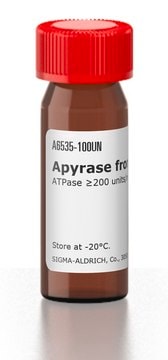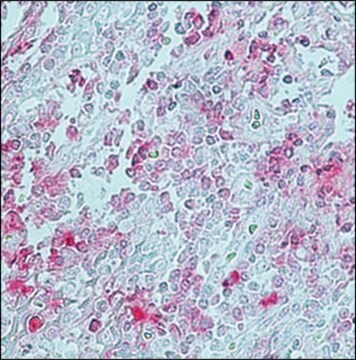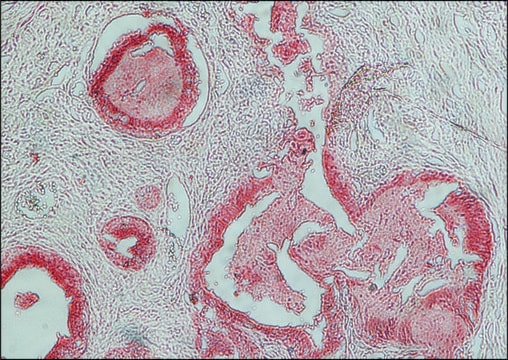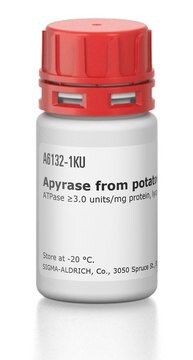Wichtige Dokumente
A2306
Monoclonal Anti-Rabbit Immunoglobulins−Alkaline Phosphatase antibody produced in mouse
clone RG-16, purified immunoglobulin, buffered aqueous glycerol solution
Synonym(e):
Monoclonal Anti-Rabbit Immunoglobulins (IgG, IgA, IgM)
About This Item
Empfohlene Produkte
Biologische Quelle
mouse
Qualitätsniveau
Konjugat
alkaline phosphatase conjugate
Antikörperform
purified immunoglobulin
Antikörper-Produkttyp
secondary antibodies
Klon
RG-16, monoclonal
Form
buffered aqueous glycerol solution
Speziesreaktivität
rabbit
Darf nicht reagieren mit
pig, chicken, bovine, horse, human, guinea pig, turkey, rat, canine, goat, feline, sheep
Methode(n)
direct ELISA: 1:40,000
immunohistochemistry (formalin-fixed, paraffin-embedded sections): 1:160 using human tonsil and Cat. No. I8635 as the primary antibody
western blot: 1:160,000-1:320,000 using detecting β-actin in total cell extract of HeLa cells (5-10 μg per well)
Isotyp
IgG1
Versandbedingung
wet ice
Lagertemp.
2-8°C
Posttranslationale Modifikation Target
unmodified
Suchen Sie nach ähnlichen Produkten? Aufrufen Leitfaden zum Produktvergleich
Allgemeine Beschreibung
Spezifität
Anwendung
- indirect enzyme linked immunosorbent assay (ELISA)
- immunoblotting
- immunohistochemistry
Biochem./physiol. Wirkung
Mouse monoclonal anti-rabbit immunoglobulins-alkaline phosphatase antibody binds to an epitope on the heavy chain of rabbit IgG, IgA, and IgM. The product stains bands at the intact whole molecule and at the heavy chains in an immunoblot of denatured, non-reduced rabbit immunoglobulins. Reduction of rabbit immunoglobulins destroys the epitope. In ELISA, the product shows no cross reaction with human serum or tissue preparations, nor with human IgA, IgG, or IgM.
Physikalische Form
Haftungsausschluss
Sie haben nicht das passende Produkt gefunden?
Probieren Sie unser Produkt-Auswahlhilfe. aus.
Lagerklassenschlüssel
10 - Combustible liquids
WGK
WGK 3
Flammpunkt (°F)
Not applicable
Flammpunkt (°C)
Not applicable
Persönliche Schutzausrüstung
Eyeshields, Gloves, multi-purpose combination respirator cartridge (US)
Hier finden Sie alle aktuellen Versionen:
Besitzen Sie dieses Produkt bereits?
In der Dokumentenbibliothek finden Sie die Dokumentation zu den Produkten, die Sie kürzlich erworben haben.
Unser Team von Wissenschaftlern verfügt über Erfahrung in allen Forschungsbereichen einschließlich Life Science, Materialwissenschaften, chemischer Synthese, Chromatographie, Analytik und vielen mehr..
Setzen Sie sich mit dem technischen Dienst in Verbindung.








